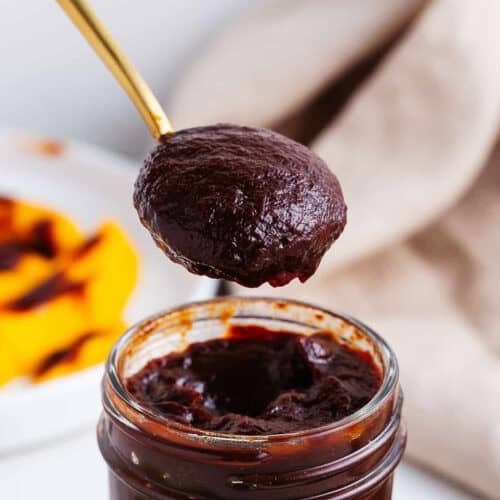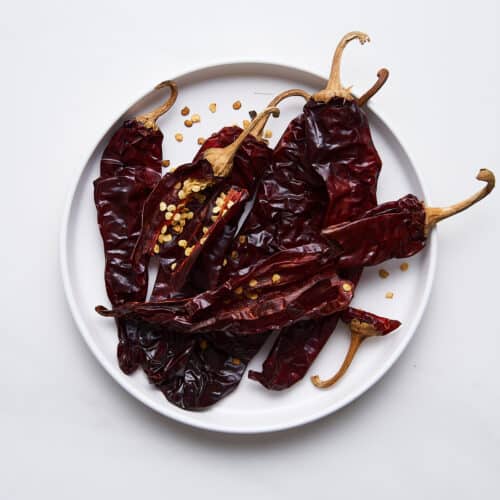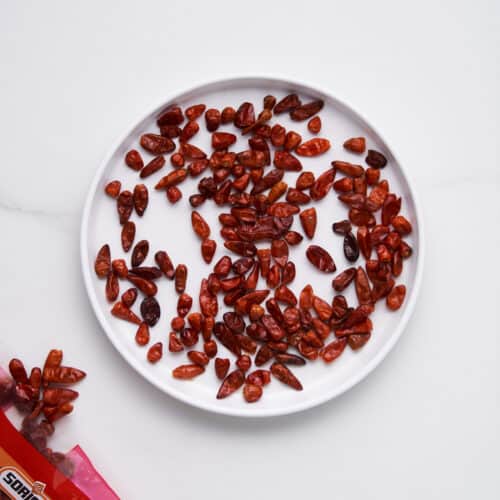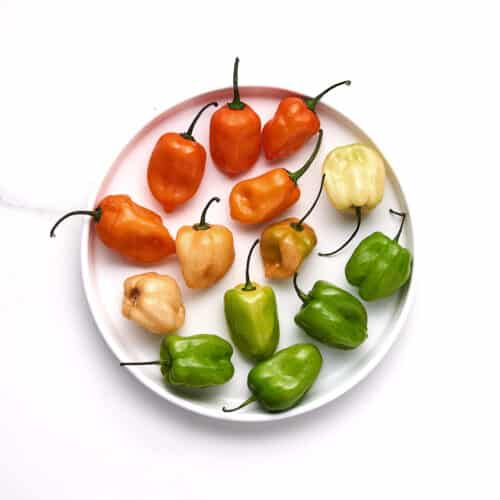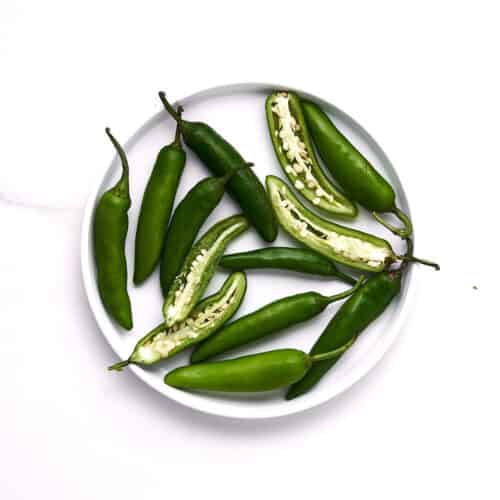Ancho Chile
Ancho chiles (or ancho peppers) are one of the most well-known and widely used spicy peppers in Mexican cooking. Find out everything you need to know in this detailed guide, including how to prepare them for a variety of recipes.

What are ancho chiles?
Ancho chiles are part of the Capsicum annuum species and the dried form of poblano peppers, which are native to the state of Puebla in central Mexico. The name “ancho” means “wide” in Spanish, referring to the broad, flat shape of the pepper.
These chiles are typically a deep, reddish-brown color and have a wrinkled, sometimes heart-shaped appearance. When the peppers are left to ripen and dry out in the sun, that’s when they become anchos!
Ancho chiles are widely used in Mexican and Tex-Mex cuisines. They are a key ingredient in many mole recipes and are often used to make other salsas, pastes, and marinades.
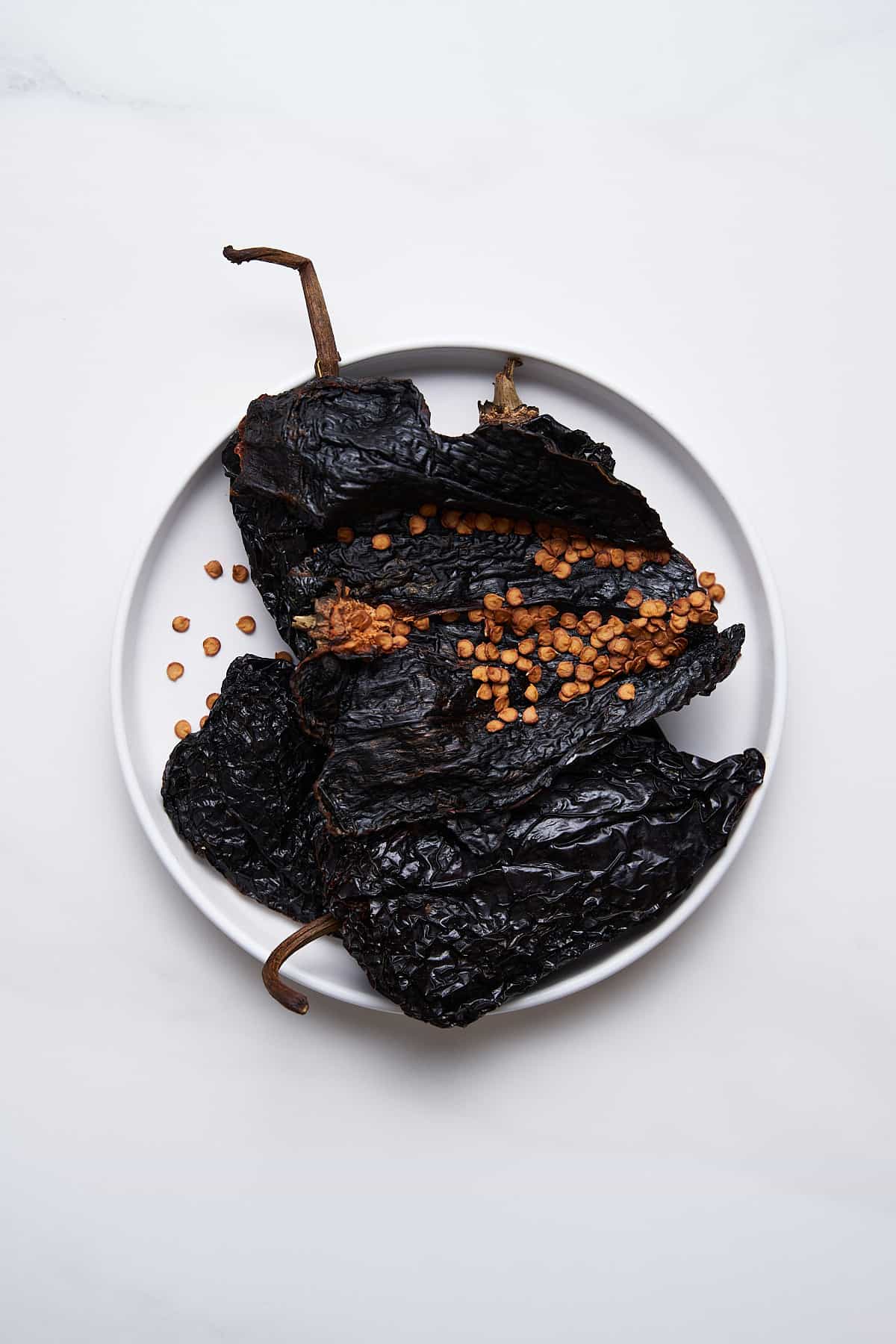
Flavor profile
While poblano peppers offer a green, garden-fresh flavor, ancho peppers are much more complex. You should be able to taste notes of dried cherry, plum, and raisin balanced by hints of earthiness, mild smokiness, and undertones of coffee.
Unlike some other chile varieties that are more aggressively hot or smoky, ancho chiles are known for their balance of sweet and smoky flavors.
This makes them a favorite for adding depth and a touch of warmth to sauces, stews, marinades, and traditional Mexican moles, like mole poblano, without overpowering the other ingredients.
Spice level
Ancho chiles are considered to be quite a mild chile variety, reaching 1,000-2,000 Scoville Heat Units (SHU) on the Scoville Heat Scale. For reference, they are much milder than jalapeno peppers (2,500-8,000 SHU) but spicier than bell peppers (0 SHU).
This makes them suitable for a broader audience, especially if you’re sensitive to spicy foods but still interested in Tex-Mex and Mexican cuisine. Just note that the spice level of ancho chiles can vary considerably, even when they’re from the same plant.

Health benefits
Ancho chiles are an underrated source of vitamins A and C. Vitamin A is essential for eye health and skin health while vitamin C is an antioxidant that plays an important role in wound healing, immune function, and collagen synthesis.
Also, the capsaicin in ancho chiles has been shown to have anti-inflammatory properties that may be beneficial in reducing chronic inflammation.
Cooking with ancho chiles
Ancho chiles are incredibly versatile and can be used in various dishes. They’re great for soups, stews, and marinades. Rehydrating them in hot water softens the chiles, making them perfect for blending into rich and flavorful sauces or pastes.
Their mild heat and rich flavor mean they’re ideal for adding depth to vegetarian dishes. You can also grind dried anchos into a powder to create a custom spice blend or smoky ancho chile seasoning.
Learn how to seed and rehydrate arbol chiles in my video tutorial below!
Recipes
As one of the most famous chiles in the world, anchos form part of a lot of recipes ranging from sauces to soups. Here are some of our favorite plant-based versions of these dishes:
Storage
Make sure to keep your ancho chiles or powder in airtight glass containers to keep insects away and the moisture under control. Store them in a cool, dark, and dry environment, like a cupboard or pantry), to lengthen their shelf life.
For the best flavor, use your ancho peppers within 6 months. But, they will keep for up to a year if you forget about them. You can also freeze your anchos for extended use.
Buying guide
Along with a few other staple chiles, you’re going to want ancho chiles kicking around if you like cooking Mexican food! They should should be firm and leathery, but still pliable.
It’s best to avoid brittle, cracked, or blemished peppers. The color should be dark red, almost mahogany, and the stems beige and tough (almost wood-like). Ancho peppers are the easiest variety to find outside of Mexico, so you’ll likely be able to find them in grocery stores near the spice aisles in whole or powder form.
If you live near a Mexican grocer, you’ll definitely be able to find them there. If you’re still unsure of where to find them, you can always order ancho chiles online.
It’s worth mentioning that pasilla chiles and ancho chiles are often sold as one another in places outside of Mexico. Just remember to look for the wide, heart-like shape of anchos.

Substitutions
With a surprisingly difficult flavor and spice level to replicate, there are only a couple of good chile ancho substitutions to choose from:
- Pasilla chiles: Although more earthy, pasilla chiles have the most similar flavor profile to anchos. However, they can be spicier, so watch out for that.
- Mulato chiles: If you can’t find pasilla chiles, mulatos are a close runner-up. While they are also made from poblano peppers, they can be significantly hotter than ancho peppers because they are left to ripen longer. However, they do provide similar sweet, smoky, and dark chocolate notes.

Frequently asked questions
If your food comes out bitter after using ancho chiles, it’s likely because they were burned during toasting or the seeds were left in. In some cases, seeds can be very bitter when left in the chiles.
Yes, you can make your own ancho chiles. If you have access to poblano peppers or seeds, you can grow your own and dry them under the sun. If the weather is an issue, try using a dehydrator or your oven.
Although they have a complex, smoky flavor, ancho chiles are not smoked in the literal sense. If you’re looking for smokier notes, try morita chiles or chipotle meco chiles.
More Mexican chiles
If you’re interested in learning about more popular chiles used in Mexican cooking, check out these other detailed guides:
Dried chiles
Fresh chiles
Watch how to make
Hungry for more?
If you enjoyed this recipe, please consider leaving a star rating and a comment down below! Your feedback not only helps others discover our blog but also gives us valuable insights from your experience.
Don’t forget to subscribe to our newsletter for the latest recipes, and check out our shop for our top kitchen recommendations. Thank you for supporting BBV!
Recipe

How to Rehydrate Ancho Chiles
Equipment
- Kitchen shears
- Cast-iron skillet or somal
- Saucepan
Instructions
- Using kitchen shears, cut off the stems of the chiles and cut them open. Remove the seeds and veins and discard.
- Heat a cast-iron skillet over medium, then dry toast them for ~30-60 seconds per side, or until fragrant.
- Bring a saucepan of water to boil, then turn the heat off, add the anchos in, cover the pot, and let the chiles rehydrate for 10-15 minutes, or until they feel soft and pliable.
- Your chiles are now ready to be used in various recipes, from mole poblano and vegan chorizo to chamoy.
Notes
Nutrition
Note: I’ve updated this post to include new information and helpful tips.
Mitch Chapman is a food writer, photographer, and one of the founders of Broke Bank Vegan. With a background in healthcare and the restaurant industry, he has a passion for sharing healthy yet flavorful plant-based food.

